Can tiles be laid on drywall: analysis of the tricks of laying tiles
Drywall is actively used to align walls and create various partitions, which can later be finished with various materials, including tiles. Plasterboard sheets are attached to the metal frame using self-tapping screws, the caps of which are recessed inside the sheet, and the resulting holes are sealed with putty and covered with nitro enamel or alcohol varnish. This avoids corrosion of the fasteners. The seams between the sheets of drywall are glued with a special serpentine tape and also coated with putty. When laying tiles on drywall, you can use both tile adhesive and mastic as a binder solution. Although experts recommend giving preference to elastic tile adhesive with better adhesion to the drywall base.
This video demonstrates the process of performing more of the construction work:
Which gypsum board can be tiled?
Manufacturers produce several types of drywall, which differ from each other in sheet thickness, as well as resistance to moisture and open fire. It is easy for customers to distinguish different types of drywall from each other, since manufacturers along with the abbreviation of names (GVL, GKLV, etc.) use color coding.
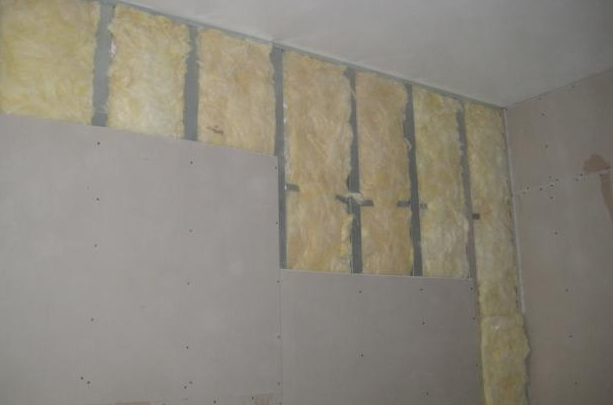
A detailed analysis of the process of laying tiles on the walls is considered in our article:https://floor.expertexpro.com/en/pol-pokritiya/plitka/kak-klast-plitku-na-stenu-video.html.
In bathrooms and toilets - the rooms in which tiles are most often used for decoration, with the help of drywall not only level walls, but also build various decorative cabinets, niches and boxes from it, covering engineering communications and elements of sanitary equipment. For example, a rigid metal frame of a hanging toilet is hidden behind a plasterboard wall, which is finished with tiles and merges with the general interior of the room. Therefore, for people who do not see the power of a hidden frame, hanging toilets raise concerns about the safety of their operation.
How to glue tiles on drywall?
The main problem when conducting gypsum plasterboard wall cladding is the possibility of warping them. To prevent this surface defect, master tilers use special guide strips, maintaining a distance of 40 cm between them. Depending on the thickness of the drywall sheet, this distance can be reduced. In addition to the strips, for the same purposes, you can also use a polypropylene stucco mesh, which is glued to drywall with PVA glue or fixed with brackets.
The installation of two layers of drywall allows also to increase the strength of the base. Let the material consumption increase, but the strength of such a wall will no longer cause concern.
Important! Drywall is necessarily treated with a primer, which is applied to the surface of the building material in two layers. At the same time, in accordance with the technology, each drying coat is given a drying time of 40 minutes to an hour.
Elastic moisture-resistant tile adhesive is bred in accordance with the instructions immediately before laying the tiles. For uniform mixing use a drill and a special nozzle.Applying the tile according to previously made markings using the level, the master slightly presses on it, and the adhesive mixture is distributed over the entire wrong surface of the tile.
We will help you choose the layout of the tiles for the bathroom in a special material:https://floor.expertexpro.com/en/pol-pokritiya/plitka/kak-polozhit-plitku-v-vannoj.html. Layout options and design solutions.
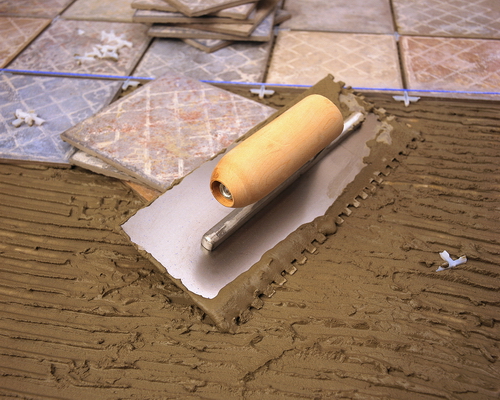
Important! Uneven distribution of tile adhesive under the cladding, as a result of which voids are formed, must not be allowed. The presence of such voids affects the quality of adhesion of the tile to the base and can cause damage to the tile in these places as a result of mechanical stress.
When laying tile, the following algorithm of work is adhered to:
- They draw up a tile laying scheme, taking into account the number of whole and cut rows, the placement of the pattern, the arrangement of the facing elements, the presence and width of the tile joints.
- They beat off the zero level and carry out marking using a water level, which subsequently allows you not to think about the evenness of the masonry.
- Apply glue to the wall and begin laying tiles, inserting cross-shaped plastic spacers between adjacent tiles.
- The glue is removed from the seams until it has hardened to facilitate the grouting process, which is carried out later.
- After laying out five rows of tiles, it is necessary to take a technological break, which should last at least an hour. This time is enough to glue.
- Next, the next four to five rows are laid out and again an hour break.
- Grouting carried out after complete drying of the tile adhesive. At the same time, the spacers are removed, and the grout is applied with a thin spatula and washed off with a damp cloth the excess that has fallen on the tile.
Are the calculations of the required number of tiles difficult? We will tell you how to do it right on our website:https://floor.expertexpro.com/en/pol-pokritiya/plitka/skolko-nuzhno-plitki-dlya-vannoj.html.
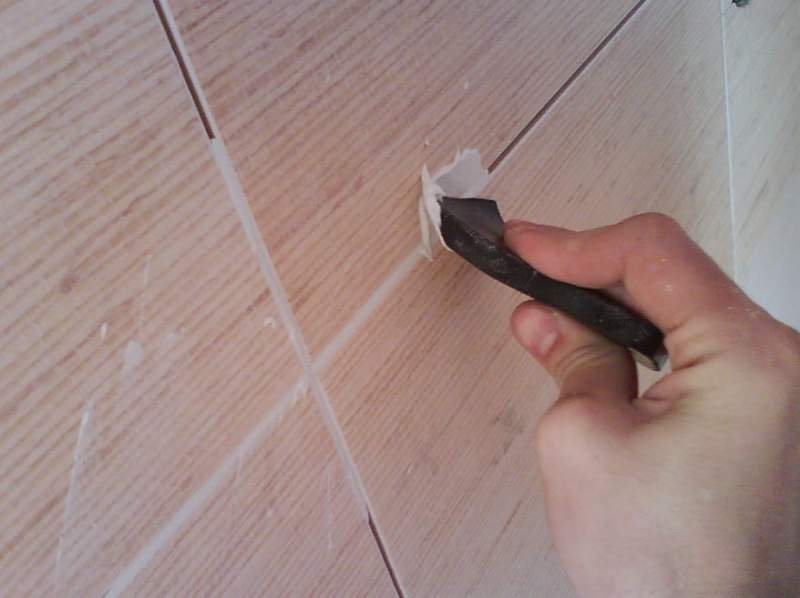
Important! After laying the decorative border, it is also advised to interrupt the facing work for an hour. This will prevent possible extrusion of tiles from the masonry.
Features of tile cutting
For tile cutting for pieces of the required size, they use a special tool - a tile cutter, which allows you to get an even cut edge. There are various models of this tool, which differ in the principle of action and price. However, even the cheapest models allow you to achieve the desired result, so for household use you can not spend money on a professional expensive tool. In addition to the tile cutter, special drills for the drill may be needed, allowing you to cut round holes in the tile.
This material will undoubtedly be useful to those who do not know how to glue tiles on drywall. After reading the tips and watching the video, you can get an idea of the complexity of facing work. Nevertheless, it is better to trust the laying of tiles by specialists, otherwise you can spoil the expensive and beautiful material, violating the technology of work.

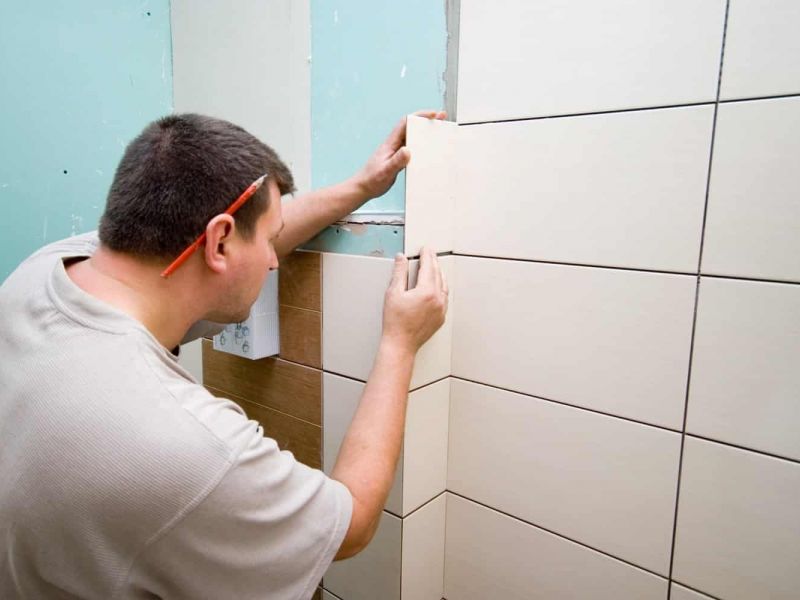
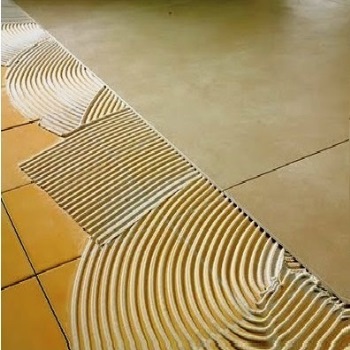
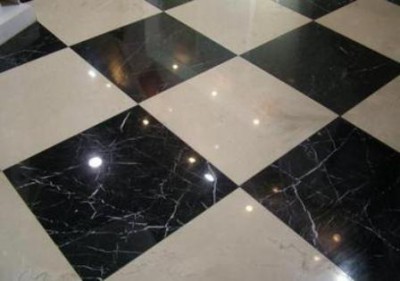
6 comments